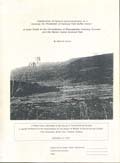| Thesis |
 |
|
| Title | Stabilization of upland agroecosystems as a strategy for protection of national park buffer zones: a case study of the co-evolution of Minangkabau Farming Systems and Kerinci Seblat National Park | | Author | Malcom Cairns | | Year | 1994 | | Academic Departement, University | York University | | City | Ontario, Canada | | Number of Pages | 286 | | Departement | Environmental Studies | | Degree | S-2 | | Call Number | TD0042-04 | | Keywords | Agroecosystem, National Park Buffer Zones, Co-evolution, Minangkabau Farming, Kerinci Seblat National Park, Slash-and-Burn, Tenure, Matrilineal |
|
| Abstract: |
| Despite the unfortunate record of park - farmer conflicts throughout Southeast Asia, there are notable exceptions where the production objectives of local farming communities have co-existed in relative harmony with conservation goals of adjacent protected areas and have resulted in retained integrity of park boundaries and successful conservation of the biodiversity contained within. These case studies provide insights on the factors responsible for the conservation and enhancement of biodiversity and suggest ways in which conditions responsible for is maintenance may be enhanced.
This paper suggests that the north-eastern flank of the Kerinci Seblat National Park in West Sumatra, Indonesia, exemplifies a relatively benign park - farmer interrelationship. It examines historical, socio-cultural, biophysical and economic factors that have shaped Minangkabau land-use patterns in the study area, with particular. focus on. the rotational bush-fallow system that constitutes the immediate farming system - park interface, and it suggests linkages with reduced pressure on park resources.
The underpinnings of the relative harmony of farming systems with West Sumatra's natural environment are a unique fusion of socio-cultural characteristics of the Minangkabau, historical events that have shaped West Sumatra's development, and agroecological attributes of the landscape. Although the conditions found in this case study may not be directly extrapolated to other areas, a number of lessons emerged that can be widely applied in ongoing efforts to protect parks and conserve biodiversity. |
|
|
Download file(s): Click icon to download/open file.
|
|
|
|
|
| Viewed in 3472 times. Downloaded in 0 times. |